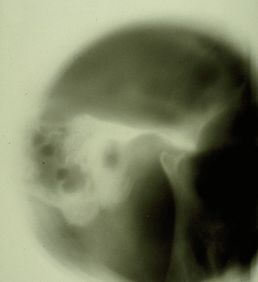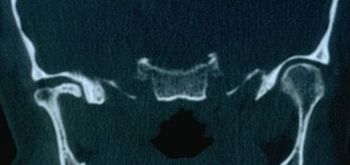Difference between revisions of "Correction chapters"
| Line 14: | Line 14: | ||
It's crucial to distinguish between natural languages (like English, German, Italian, etc.) and formal languages (like mathematics). Natural languages emerge spontaneously within communities, while formal languages are artificially created for specific applications in fields like logic, mathematics, and computer science. Formal languages have well-defined syntax and semantics, whereas natural languages, despite having grammar, often lack explicit semantics. | It's crucial to distinguish between natural languages (like English, German, Italian, etc.) and formal languages (like mathematics). Natural languages emerge spontaneously within communities, while formal languages are artificially created for specific applications in fields like logic, mathematics, and computer science. Formal languages have well-defined syntax and semantics, whereas natural languages, despite having grammar, often lack explicit semantics. | ||
To keep the analysis dynamic, an exemplary clinical case will be examined through different language logics: | To keep the analysis dynamic, an exemplary clinical case will be examined through different language logics: | ||
*[[The logic of the classical language|Classical language]], | |||
* [[The logic of the probabilistic language|Probabilistic language]], | |||
*[[Fuzzy language logic|Fuzzy logic]] and | |||
*[[System logic|Logic of System]]. | |||
===Clinical case and medical language logic=== | ===Clinical case and medical language logic=== | ||
| Line 42: | Line 41: | ||
<center> | <center> | ||
==Clinical approach== | ==Clinical approach == | ||
(hover over the images) | (hover over the images) | ||
</center> | </center> | ||
| Line 80: | Line 79: | ||
In the case of encrypted language, much like in computers, the brain also encrypts and decrypts information. For example, researchers have explored how synaptic memory might be digitally stored in the brain.<ref>{{Cita libro | autore = Petersen C | autore2 = Malenka RC | titolo = All-or-none potentiation at CA3-CA1 synapses | url = https://www.ncbi.nlm.nih.gov/pmc/articles/PMC22559/pdf/pq004732.pdf | anno = 1998 }}</ref> | In the case of encrypted language, much like in computers, the brain also encrypts and decrypts information. For example, researchers have explored how synaptic memory might be digitally stored in the brain.<ref>{{Cita libro | autore = Petersen C | autore2 = Malenka RC | titolo = All-or-none potentiation at CA3-CA1 synapses | url = https://www.ncbi.nlm.nih.gov/pmc/articles/PMC22559/pdf/pq004732.pdf | anno = 1998 }}</ref> | ||
==Final Considerations == | ==Final Considerations== | ||
Language's role in diagnosis is a critical issue in medicine. The ICD-9 lists 6,969 disease codes, which increased to 12,420 in ICD-10.<ref name=":0">{{Cita libro | autore = Stanley DE | autore2 = Campos DG | titolo = The Logic of Medical Diagnosis | url = https://pubmed.ncbi.nlm.nih.gov/23974509/ | opera = Perspect Biol Med | anno = 2013 }}</ref> Studies estimate that diagnostic errors contribute to 40,000 to 80,000 deaths annually.<ref>{{Cita libro | autore = Leape LL | titolo = What Practices Will Most Improve Safety? | anno = 2002 }}</ref> | Language's role in diagnosis is a critical issue in medicine. The ICD-9 lists 6,969 disease codes, which increased to 12,420 in ICD-10.<ref name=":0">{{Cita libro | autore = Stanley DE | autore2 = Campos DG | titolo = The Logic of Medical Diagnosis | url = https://pubmed.ncbi.nlm.nih.gov/23974509/ | opera = Perspect Biol Med | anno = 2013 }}</ref> Studies estimate that diagnostic errors contribute to 40,000 to 80,000 deaths annually.<ref>{{Cita libro | autore = Leape LL | titolo = What Practices Will Most Improve Safety? | anno = 2002 }}</ref> | ||
Revision as of 17:55, 16 October 2024
Correction chapters
Medical language is an extended natural language
Language is essential in the medical field, but it can sometimes lead to misunderstandings due to its semantically limited nature and lack of coherence with established scientific paradigms. For instance, terms like "orofacial pain" may have significantly different meanings if interpreted through classical logic rather than formal logic.
The transition from classical to formal logic is not just an additional step, but it requires precise and accurate description. Despite advances in medical technology—such as electromyographs, cone beam computed tomography (CBCT), and digital oral scanning systems—there remains a need for refinement in medical language.
It's crucial to distinguish between natural languages (like English, German, Italian, etc.) and formal languages (like mathematics). Natural languages emerge spontaneously within communities, while formal languages are artificially created for specific applications in fields like logic, mathematics, and computer science. Formal languages have well-defined syntax and semantics, whereas natural languages, despite having grammar, often lack explicit semantics.
To keep the analysis dynamic, an exemplary clinical case will be examined through different language logics:
Clinical case and medical language logic
The patient, Mary Poppins (fictitious name), has been receiving multidisciplinary medical attention for over a decade, involving dentists, general practitioners, neurologists, and dermatologists. Her medical history is summarized as follows:
At 40, Mrs. Poppins noticed small spots of abnormal pigmentation on the right side of her face. Ten years later, after a skin biopsy during dermatology hospitalization, she was diagnosed with localized facial scleroderma (morphea) and prescribed corticosteroids. By age 44, she experienced involuntary contractions of the right masseter and temporal muscles, which increased in frequency and duration over time. At her first neurological evaluation, her face showed significant asymmetry and hypertrophy of the right masseter and temporal muscles. Various diagnoses were made, illustrating the limitations of medical language.
After several investigations—such as anamnesis, stratigraphy, and computed tomography (Figures 1, 2, and 3)—the dentist diagnosed "Temporomandibular Disorders" (TMD).[1][2][3] Meanwhile, the neurologist diagnosed "Neuropathic Orofacial Pain" (nOP), minimizing TMD as the primary cause. For objectivity, we refer to her condition as "TMDs/nOP."
We are thus faced with several questions that deserve thorough discussion, as they pertain to clinical diagnostics.
Medical language falls into a hybrid category—it arises from the expansion of everyday language by incorporating technical terminologies such as "neuropathic pain," "Temporomandibular Disorders," or "demyelination." This evolution does not separate it from the inherent ambiguity of natural language, which often lacks precision in critical contexts. For example, the term "disease," crucial in nosology, research, and practice, remains vague in its definition, which can lead to diagnostic uncertainty.
A core question arises: is disease related to the patient as an individual, or does it pertain to the system as a whole (i.e., the organism)? Can a patient who is deemed healthy at a given time coexist with a system that was structurally compromised at an earlier point ?
This perspective urges a reconsideration of disease as an evolutionary process rather than a static condition. The dynamic nature of health and disease demands a sophisticated, possibly quantitative, interpretation that factors in temporal variations across biological and pathological systems.
The notion of "language without semantics," treated as irrelevant, highlights a significant issue. Language's inherent semantic interdependence is vital for effective communication.[4]
In short, the debate on whether the patient is ill, or if it is her masticatory system exhibiting pathology, requires a detailed analysis from a medical standpoint. Distinguishing between systemic pathology (masticatory system as a whole) and localized pathology (e.g., TMJ) is key.
Clinical approach
(hover over the images)
Understanding of Medical Terminology
Understanding what "meaning" signifies is a complex topic. The Cambridge Dictionary defines it as "what something expresses or represents."[5] But this definition remains broad and leads to further questions, as different theories offer varied perspectives without a definitive answer.[6][7]
In linguistic theory, terms act as labels for objects, either concrete or abstract. For example, the word "apple" evokes a clear image of a fruit. But expressions like "orofacial pain" acquire different meanings depending on the context—for a dentist, a neurologist, or for the patient, Mary Poppins, herself.
In the case of Mary Poppins, the neurologist will frame "pain in the right half of the face" using terms like synapses and action potentials, while the dentist will focus on teeth and occlusion. This variation in meaning highlights the importance of context in diagnosis.
A deeper exploration of modern philosophy of meaning, such as Gottlob Frege's distinction between "extension" (all entities sharing a characteristic) and "intension" (attributes that define an idea), sheds light on how diagnostic errors may occur.[8]
For example, "pain" is a broad term with high extension but low intension. However, focusing on specific pain types (dental implants, pulpitis, neuropathic pain) increases intension and reduces extension.[9]
This shows how the vulnerability of medical language to semantic and contextual ambiguity can lead to significant diagnostic challenges.[10]
Ambiguity and Vagueness in Medical Language
Ambiguity in medical language occurs when terms have multiple meanings, leading to errors and inconsistencies in diagnosis. Both ambiguity and vagueness are underexplored in clinical practice, despite their significant impact on clinical guidelines.[11][12]
Doctors' interpretations of vague medical terms often differ, reducing uniformity in clinical practices compared to guidelines.[13]
This leads to inefficiencies in decoding the "machine message" transmitted by the system, as in the case of Mary Poppins' orofacial pain. Next, we delve into the concept of "encrypted machine language" in the subsequent chapters.
Encryption
Imagine a brain sending a message in machine language (wave trains, ion field packets), and that this carries a message like "Ephaptic," which must be decrypted to translate into verbal language. Both the patient, with epistemic vagueness, and the doctor, constrained by their field of expertise, contribute to the distortion of the machine's original message.
Often, the system's message remains encrypted until symptoms become severe enough for a diagnosis to be made.
(Answer: Consider the Gate Control phenomenon.)
In the case of encrypted language, much like in computers, the brain also encrypts and decrypts information. For example, researchers have explored how synaptic memory might be digitally stored in the brain.[14]
Final Considerations
Language's role in diagnosis is a critical issue in medicine. The ICD-9 lists 6,969 disease codes, which increased to 12,420 in ICD-10.[15] Studies estimate that diagnostic errors contribute to 40,000 to 80,000 deaths annually.[16]
Charles Sanders Peirce's triadic approach—abduction, deduction, and induction—emphasizes that diagnostic errors often result from misinterpretations of clinical signs.[17]
In this chapter, we shifted from discussing clinical signs to machine language and non-verbal signals. The next chapters will delve deeper into logic, time, and assembler codes.
- ↑ Tanaka E, Detamore MS, Mercuri LG, «Degenerative disorders of the temporomandibular joint: etiology, diagnosis, and treatment», in J Dent Res, 2008».
DOI:10.1177/154405910808700406 - ↑ Roberts WE, Stocum DL, «Part II: Temporomandibular Joint (TMJ)-Regeneration, Degeneration, and Adaptation», in Curr Osteoporos Rep, 2018».
DOI:10.1007/s11914-018-0462-8 - ↑ Lingzhi L, Huimin S, Han X, Lizhen W, «MRI assessment and histopathologic evaluation of subchondral bone remodeling in temporomandibular joint osteoarthritis: a retrospective study», in Oral Surg Oral Med Oral Pathol Oral Radiol, 2018».
DOI:10.1016/j.oooo.2018.05.047 - ↑ Sadegh-Zadeh Kazem, «Handbook of Analytic Philosophy of Medicine», Springer, 2012».
- ↑ Cambridge Dictionary online
- ↑ Blouw P, Eliasmith C, «Using Neural Networks to Generate Inferential Roles for Natural Language», in Front Psychol, 2018».
DOI:10.3389/fpsyg.2017.02335 - ↑ Green K, «Dummett: Philosophy of Language», 2001».
- ↑ Wikipedia entry
- ↑ Porporatti AL, Bonjardim LR, «Pain from Dental Implant Placement, Inflammatory Pulpitis Pain, and Neuropathic Pain Present Different Somatosensory Profiles», in J Oral Facial Pain Headache, 2017».
DOI:10.11607/ofph.1680 - ↑ Jääskeläinen SK, «Differential Diagnosis of Chronic Neuropathic Orofacial Pain», in J Clin Neurophysiol, 2019».
DOI:10.1097/WNP.0000000000000583 - ↑ Schick F, «Ambiguity and Logic», Cambridge University Press, 2003».
- ↑ Teigen KH, «The language of uncertainty», 1988».
- ↑ Codish S, Shiffman RN, «A model of ambiguity and vagueness in clinical practice guideline recommendations», 2005».
- ↑ Petersen C, Malenka RC, «All-or-none potentiation at CA3-CA1 synapses», 1998».
- ↑ Stanley DE, Campos DG, «The Logic of Medical Diagnosis», in Perspect Biol Med, 2013».
- ↑ Leape LL, «What Practices Will Most Improve Safety?», 2002».
- ↑ Vanstone M, «Experienced Physician Descriptions of Intuition in Clinical Reasoning: A Typology», 2019».




